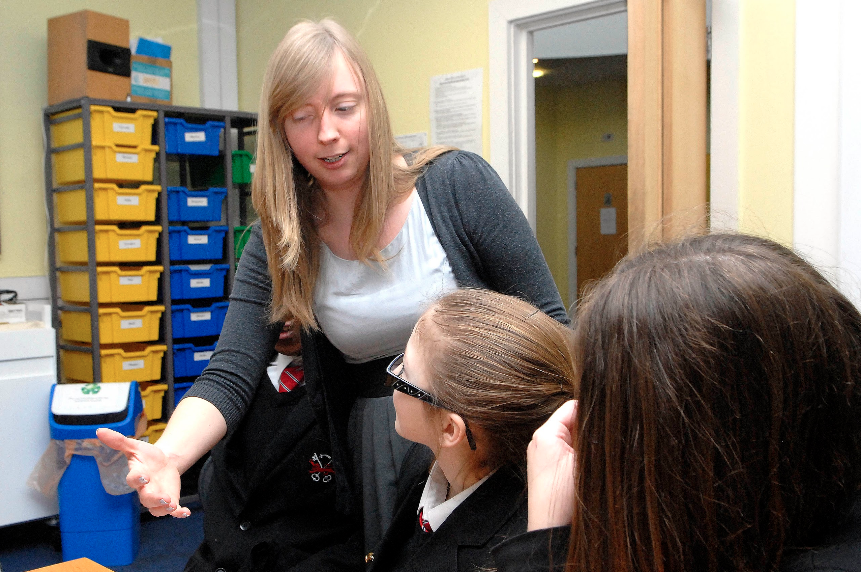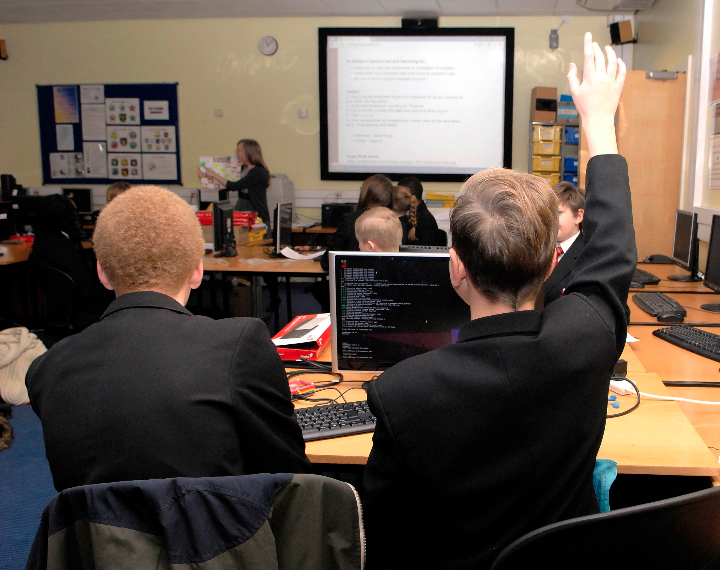|
While so much about publishing has changed in just the last few years, one of the unfortunate truths about publishing is that so much has not changed. The traditional publishing model, as most authors, readers, and booksellers know it, has not changed much in the last few hundred years, in fact. With the advent of digital publishing, self-publishing, and ebook-0nly and digital-first publishing, traditional models are looking for ways to keep up with the changes coming at them. PubSoft, a new platform aimed at helping publishers brand themselves and reach out to a category of consumer called “influencer readers,” released some news today about what it has to offer to a wide variety of publishers, from major houses with several imprints, down to a handful-of-titles independent publisher. “Pubsoft's unique digital publishing engine is a game-changer in the publishing sector. With Pubsoft, publishers can quickly and easily create and manage a custom ebook store to enable direct-to-consumer ebook sales, including branded mobile publishing for iPad devices. The Pubsoft platform gives publishers the power to engage and manage authors with SEO-optimized author and book landing pages, social media marketing integration, distribution capabilities across multiple channels and online content sampling and multiple point of purchase options. “The platform streamlines backend workflow tasks, automating online marketing functions and administrative work and allowing publishers to capture and analyze author, reader and revenue data. Pubsoft delivers a dashboard that gives publishers the power to capture metadata and drill down into book, author and reader levels for insights that can supercharge marketing campaigns, inform key business decisions and drive broader product strategy.” Good e-Reader spoke with Kbuuk and PubSoft’s Dougal Cameron about what this platform has to offer everyone involved in the life of a book. “Publishers’ websites are increasingly being used by readers who want to know more about authors. The very fact that they're on that publisher's website suggests that they have a deeper level of connection with the publisher. Our aim is to capture that reader and allow the publisher to connect with that reader, helping publishers understand what readers want and refine their offering. The impact will be a direct sales platform for ebooks, a publisher-branded iPad app, a storefront that can be blended with the publishers look and feel, along with an author portal and publisher portal.” PubSoft’s publisher dashboard currently offers far too many features to identify, but highlights include a publisher-branded interface for the growing number of readers who are seeking out publisher websites for information on their favorite authors, a branded ebook store where their readers can purchase titles, real-time data on tracking book sales and royalties, and more. Essentially, PubSoft stands to bring traditional publishers into a model that more closely mimics that freedom and information that self-publishers are currently enjoying from their platforms, all while helping leverage much-needed promotion and book discovery for their authors. At the same time, it is the readers and authors who most stand to benefit from the interface.
PubSoft’s New Platform Stands to Revolutionize the Publishing Industry is a post from: E-Reader News |
A Semi-automated Technology Roundup Provided by Linebaugh Public Library IT Staff | techblog.linebaugh.org
Tuesday, September 24, 2013
PubSoft’s New Platform Stands to Revolutionize the Publishing Industry
Snugg Cover Review for Nexus 7 2
| Last month I posted a review of the official Asus travel cover for the Google Nexus 7 2. Because of its cheap, flimsy design I didn’t like it very much, and now it just sits on a shelf gathering dust. As I set out to find a better cover, the folks at TheSnugg.com offered to […] |
URL: http://feeds.the-ebook-reader.com/~r/feedburner/cmWU/~3/2NTjGm9Dhu8/
Simon&Schuster Opens Select eBook Titles to Public School Classroom Use
|
Once the current digital revolution took hold, a future focused on digital reading seemed to be a possibility. The education sphere, to be sure, was eager to embrace the portability, the durability, and–perhaps above all–the cost effectiveness of ebooks. Unfortunately, buying digital editions for public school classrooms isn’t as streamlined as it is for the general public. Many teachers encountered a frustrating truth about ebooks: they weren’t books, and they weren’t software. The limbo of ebooks meant that many school systems were reluctant to spend money on ebooks, even as teachers unwrapped their shiny new iPads, Kindles, and other devices that were more than capable of supporting e-reading. Essentially, if a “property of” sticker couldn’t be placed on it, many schools wouldn’t allow state and federal funding to be used for the purchase. Now, Simon&Schuster has launched a pilot program that will help move forward the process of ebook buying for schools. The program makes several of its most popular children’s and middle grade titles available through ebook distributors Booksource, Follett, Mackin Educational Resources, and Perma-Bound, allowing classrooms to purchase a one-year license for the book as many schools already have systems in place to finance software licenses. "We're pleased to work with these four widely-respected and innovative educational distributors in this first important step toward bringing our catalog to students and teachers," said Michael Selleck, Executive Vice President, Sales and Marketing, Simon & Schuster, Inc, in a press release. "As more and more in-classroom and take-home reading takes place online and via eBook readers and tablets, publishers can help create future generations of readers and contribute to the health of our nation's educational system by providing books in the formats that schools need to help students learn." This agreement with the distributors will also mean that PC-based reading is more available to classrooms, especially those with limited access to tablet devices. Some of the titles included in the pilot are CLICK, CLACK, MOO: COWS THAT TYPE by Doreen Cronin and illustrated by Betsy Lewin, HATCHET by Gary Paulsen, OUT OF MY MIND by Sharon Draper, FAHRENHEIT 451 by Ray Bradbury, ANGELA'S ASHES by Frank McCourt and FOR WHOM THE BELL TOLLS by Ernest Hemingway.
Simon&Schuster Opens Select eBook Titles to Public School Classroom Use is a post from: E-Reader News |
Setting Up an e-Library in Nepal
|
Nepal is the latest country to wake up to the significance of having in place an effective network of libraries for education. Thankfully, the country is pursuing the establishment of digital libraries, with the government already having outlined its intention of creating 1,053 e-libraries in the Himalayan kingdom. This is no doubt a timely move, as Nepal already holds the dubious distinction of having the worst access to education among its population. Towards this end, the government in Nepal has allocated one billion rupees from the current budget allocation to facilitating access to the internet from schools and libraries. The amount is to be spent by each school’s authorities for procuring five PCs, a printer, as well as establishing internet connections. An e-library has also been inaugurated recently in the Chitwan district, with the District Education Office calling on more schools from the region to avail themselves of the government grant for buying computers. However, as the President of the Nepal Library Foundation Naresh Koirala pointed out, there is some ambiguity in the entire process as the government has stated their grant is to be spent for buying computers in schools, while the Education Minister, Madhab Prashad Poudyal, has said their government is keen to set up e-libraries in the country with that funding. Nepal faces an acute shortage of school and educational institutions, let alone a proper network of libraries. This has left it to private players or NGOs to fill the vacuum, though the absence of a coherent national policy on this has ensured there are not enough libraries to cater to its citizens. NLF, a charity organization registered in Canada and a Non-Nepali Residents Association, contributed over 100 computers to a number of schools and community libraries in Nepal between 2007 and 2012, though obviously more of such efforts are needed to ensure that there is enough access to e-libraries in the country.
Setting Up an e-Library in Nepal is a post from: E-Reader News |
OverDrive Media Console app update for iOS users
| An app update for OverDrive Media Console for iOS users is now available in the Apple App Store. This new version addresses the issues that prevented users from opening eBooks in OMC for iOS v3.0.1 after upgrading to iOS 7.
After installing v3.0.2, users may be prompted to re-authorize the app with their Adobe ID when attempting to open an EPUB eBook. If a user has not re-authorized his or her Adobe ID after upgrading to iOS 7, they will be prompted to re-authorize. If a user has previously uninstalled and reinstalled the app after upgrading to iOS 7 and then re-authorized with their Adobe ID, the user will not be prompted to re-authorize.
This update also contains the following updates:
Thanks for your patience as we resolved this issue.
Adam Sockel is a Marketing Communications Specialist with OverDrive
|
URL: http://feedproxy.google.com/~r/OverdrivesDigitalLibraryBlog/~3/5EqWepYgluI/
Sonic Pi – a free music and computing resource for teachers, and for the rest of us
| Carrie Anne Philbin, an absolutely inspirational CS teacher of the sort I wish had been around when I was a kid, has been doing a lot of work with the Pi in her lessons over the last year or so. She’s creator of the Geek Gurl Diaries YouTube web series, a Computer Science and ICT teacher, recipient of TalkTalk’s London 2013 Digital Heroes award, and somebody that all of us at Raspberry Pi think very, very highly of. Most recently, Carrie Anne has spent much of the summer working with Dr Sam Aaron at the University of Cambridge on a Key Stage 3 scheme of work for schools, tailored for England’s new programme of study, based around a little something of Sam’s called Sonic Pi. Sonic Pi is a programming environment that allows you to make sounds. Which is a very dull way of saying that it’s a way to build your own synthesiser from scratch. Sonic Pi, and the associated teaching and learning materials, are open and free. Dr Sam Aaron is a researcher at the University of Cambridge Computer Lab. He’s also a musician, and he’s one of the most interesting people I know, with a breadth of knowledge and enthusiasms that makes for some very late nights of conversation when he visits Pi Towers. Sam’s been working on Sonic Pi since 2012, and we are delighted to see his work being used so successfully in schools. Sam’s (rather brilliant) realisation is that you can engineer a situation whereby kids accidentally learn fundamental concepts of computing, programming and programmatic thinking, by being asked to do something creative: in this case, making music with a tool they’ve built themselves. The set of lessons will take kids from a starting point of no familiarity at all with computing. Sonic Pi, with the lesson plans and materials provided by Carrie Anne, gives teachers with little or no programming background plenty of support; those lesson plans offer a guided route through using Sonic Pi in the classroom. Carrie Anne says: I get asked by teachers all the time: how can Raspberry Pi be used in the classroom? And how can it help us meet the aims of the new Computing programme of study? These were questions I had, until I met Sam and started to develop lessons using his music Pi synthesizer software. For me, gender neutrality, creativity, imagination and tinker time are the basis for learning computer science in my classroom. When Sam suggested teaching computing concepts with music, I knew he was onto a winner, and that it would tick all the boxes. After a month or so of planning and preparing in Jan 2013, we started to teach our Sonic Pi lessons to my Year 8 classes, and I was astounded. Firstly, by just how engaged they were by this little computer. Getting students away from the ‘internet boxes’ in the room got them thinking about what a computer really is, wherein lies the power of the Pi. Secondly, by the positive reactions of both genders, and of students with learning difficulties, who in the past had been quite negative about the subject. In fact my most memorable occasion was when a member of the senior leadership team came into the room. He spotted my learning objectives on the board and then asked a normally uninterested 13-year-old girl what she was doing. In a few sentences she explained logic, sequencing, iteration and conditionals in a way that made it all sound so matter-of-fact. With a little structured creativity and freedom, students in both classes progressed massively with a text-based programming language. Their achievement was not only being able to program and make decisions about their code for themselves, but also in the memorable musical masterpieces they made. I’m very excited to roll this scheme of work out across the whole of Year 8 this academic year to see what more fun we can have in class. This video is an example of work prepared by a pair of girls in Year 8 (kids in Year 8 in the UK are aged 12 and 13) who are part-way through the Sonic Pi set of lessons. We’ve been so impressed by what we’ve seen so far from Sam and Carrie Anne; we look forward to seeing what comes next. Kids we’ve spoken to have been really excited and enthused by Sonic Pi, and have been hard to drag away from the class Raspberry Pis at the end of sessions. This is a program of lessons that gives kids the freedom of action to take their own Sonic Pi project in any direction they want to, moving away from the sort of lesson where everybody works on the same piece of software, and giving students the agency to develop their work in an individual way, while almost accidentally becoming familiar with an important set of fundamentals. Carrie Anne and Sam are running trials of the project in a number of different schools with very different demographics, and so far, the results look great. If you’d like to use Sonic Pi and the scheme of work Sam and Carrie Anne have created in your own classroom, you can download everything for free at the Sonic Pi website. You’ll find other teachers in the forums here at Raspberry Pi, especially in the education section. Non-teachers are also encouraged to check out the software and the scheme of work for themselves. Please join in, both there and in the comments here – we, and Sam and Carrie Anne, would love to know what you think. |
Sony PRS-T2 VS Sony PRS-T3
|
There used to be a time not too long ago, where Sony would release three different e-Reader models a year. The Japanese company has shifted their priorities to tablets and now only does one e-ink release a year. Last week Sony released their 3rd generation T3 reader and we compare it against last years model. How exactly do the two stack up against each other in a side by side comparison? Both of these devices are very much the same, in terms of hardware. The CPU speed is 1 GHZ, while RAM sits at 512 MB. You have 1.2 GB of internal memory available and can easily expand it up to 32 GB via the Micro SD. The main difference is the resolution, with 1024×758 on the T3 vs the 800×600 on the T2. They also give you around two months of battery life and have the exact same firmware, so you will have a similar experience on the newer model. The main difference between the two units is the built in case on the Sony PRS-T3. Sony has taken the gambit of a mandatory carrying case that comes for free with the e-Reader. If you remove it, the back is very jagged and if you get it wet, you could destroy it. If you want to read in the dark, you have to buy a carrying case with a light, that costs around $60.00. Sony PRS-T2 VS Sony PRS-T3 is a post from: E-Reader News |






